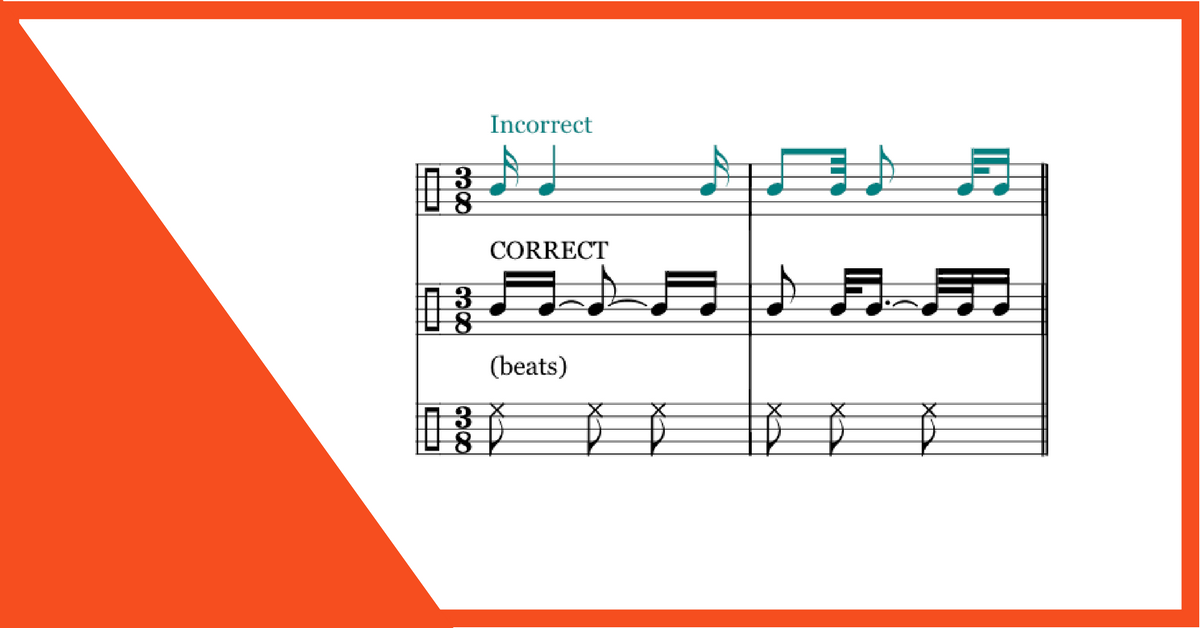An Exception
There’s at least one common exception to the need for the note values to line up with the beat structure: a simple syncopation can cross over a beat, as long as it involves only the most basic note values, and as long as it only crosses over one beat, like this:
Beams
Notice how beams can help reinforce the reader’s perception of beat grouping: all the notes in each beat are connected by a single beam. This is another visual clue that helps make the music easier to read and understand by showing the beat structure: one beam per beat is not always required, but it’s usually clearest.
Other time signatures
So far our examples have been only in 4/4 meter, where the quarter note is one beat. But the same principles apply in any meter. The important thing is to make sure you know which note value equals one beat in the given time signature.
For example, 3/4 or 2/4 are similar to 4/4 in that a quarter note gets one beat. But in 3/8, the eighth note gets one beat. Our next example shows incorrect notation, and how to fix it, in 3/8 time. As before, in the incorrect version some note values “cross over” beats, so that they don’t visually line up with the underlying structure. And as before, to fix it we can just change some note values and add some ties. Notice in this example, too, how the beams also serve to clarify the beats: as mentioned before, all the notes within a beat are joined together by a beam.
In compound meters such as 6/8, 9/8, and 12/8, the dotted quarter note equals one beat. In these meters, then, the beginning of each dotted quarter note value must be visible:
And when one beat equals a half note, as in 3/2 meter, the same principles apply again:
Notice in the preceding example how the first two beats of the second bar have the same internal rhythm (short-long-short), but it’s written two different ways: first as eighth-quarter-eighth, and then as four eighths with the middle two tied together. This involves the realm of beat divisions: the shorter values within a beat — for example, the two eighth notes within a quarter-note beat, or the three eighth notes with a dotted-quarter beat.
Here, the same principles apply on a smaller level: the rhythms we hear should match the underlying structure of beat divisions (for example, the eighth notes in 4/4 or 3/4 time, or the quarter notes in 2/2 time). But that’s a longer discussion for another time. In the 3/2 example above, both versions described above are valid ways of writing out the rhythms within a single beat, thanks to the exception described earlier about simple syncopations.
As long as the written note values line up with the beat structure, you’re usually safe. Then you can add ties to your heart’s content to make it sound however you want!

